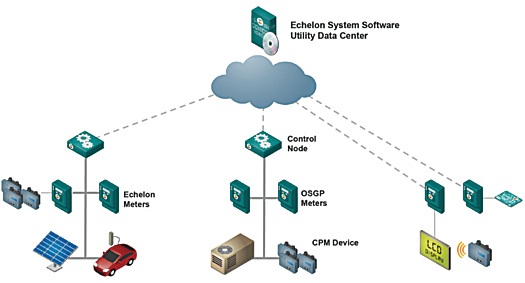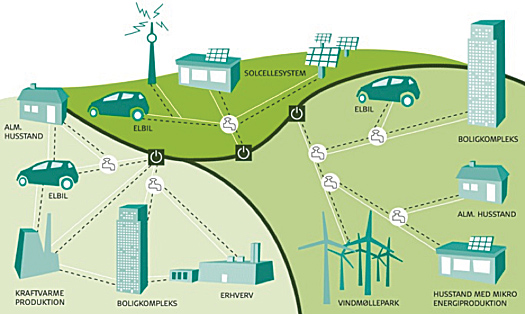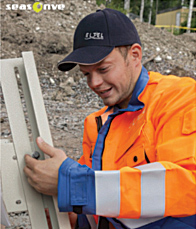Denmark takes renewable energy seriously. According to the Danish Energy Agency, renewable energy sources accounted for 40.7 percent of domestic energy produced in the country in 2011. The country has one of the world’s most ambitious goals for switching from petroleum-based and coal-based sources.
While wind energy has been the most prominent type of renewable energy in Denmark – the Danish wind turbine industry is the largest globally – solar panels are also gaining ground. In fact, the Ministry of Foreign Affairs of Denmark reported that by the end of 2012, the country had already reached its 2020 goal for solar energy.
An important player in Denmark’s energy industry is SEAS-NVE, the country’s largest consumer-owned energy company. Formed in 2004 as the merger of two energy companies – SEAS and NVE – each established in the early 1900s, SEAS-NVE represents a wide range of products, from energy and grid products to advanced consulting services on wind farm technology.
Four years after the merger, SEAS-NVE set out to replace its aging meter infrastructure, issuing a bid that was awarded to Echelon. Many energy companies choose smart meters to improve their billing processes, but SEAS-NVE recognized that in addition to billing, smart meters would allow them to solve power quality issues, respond faster to outages, and better manage energy efficiency.
By 2012, SEAS-NVE had successfully deployed 380,000 Echelon smart meters, via their service provider Eltel Networks and including billing software from Echelon partner Görlitz Lukia.
These smart meters are helping to support Denmark’s ambitious energy goals, while also boosting customer satisfaction with the company.

Smart Three-tier System
Simplifying Solar Installations
Solar panels have long been part of Denmark’s renewable energy mix, but the difference today is the sheer number of solar panels installed: The beginning of 2012 saw a 10-fold increase in solar panel deployments.
Solar installations complicate the traditional one-way relationship between energy producers and energy consumers, allowing consumers to generate a portion of their own energy needs and to distribute excess electricity back to the grid.
Having the Echelon smart meters made it easier for SEAS-NVE to keep pace with solar implementation. For one thing, the company’s technicians did not have to visit every consumer in person for each installation. Instead, SEAS-NVE could re-program the smart meters remotely to handle the more complicated interactions between consumers and the energy grid.
This re-programming capability alone saved SEAS-NVE approximately DKK 6 million ($1 million USD) in installation costs for 3,500 solar consumers. If each of their 380,000 residential consumers were to install solar panels, the installation savings could reach as much as DKK 570 million ($99 million USD).

Managing a power grid with a range of power sources – from microenergy generated by residential solar panels to windmill farms to large commercial generators combining heat and power production – is a huge challenge. SEAS-NVE set out to replace its aging meter infrastructure and has incorporated Echelon smart meters to manage, detect, and adjust power flow based on established criteria, regardless of power source. Eltel deployed these smart meters which provides energy customers a modern power grid system control resulting in lower costs.
Addressing Power Quality Challenges in Solar Panels
Once solar panels are producing power, SEAS-NVE consumers can check their smart meter to see how much power they generated for themselves and how much they provided to the grid. To date, solar consumers have been able to freely transmit their production into the grid. Currently, 36 MW capacity is being added to Denmark’s grid by SEAS-NVE consumers.
Echelon’s NES System Software has also helped SEAS-NVE’s rapid expansion in solar panels. NES System Software is part of Echelon’s three-tiered Energy Control Networking grid management platform, which also includes smart meters at the device level, and data concentrators or control nodes that collect meter and grid device data. The NES System Software seamlessly delivers all this data so it can be used by applications running at the utility head-end, such as mobile device, outage, and distribution management systems (MDM, OMS, DMS).
At SEAS-NVE, the NES System Software monitors the grid to make sure the voltage levels are within acceptable ranges. In the past, most voltage quality investigations were triggered by consumer complaints, like dimming or flickering lights or equipment failure.
Before smart meters, the utility would respond to a customer’s complaint by sending linemen to the location to obtain initial readings and to identify the severity of the fluctuations. If the linemen could not immediately find the problem, they would install power quality recording devices at the consumer’s point of common coupling, inside the consumer’s location, and at various sites along the circuit serving the consumer location. Voltage readings were recorded over a given time, which was determined primarily by the frequency of malfunctions.
The event log records the occurrence of meter events and fault conditions that are selected to be logged, along with the date and time of each event occurrence. The meter provides power quality measurements for the following: Voltage (RMS) sag (under voltage), Voltage (RMS) swell (over voltage), Over-current (RMS), Power Outages, Frequency, Phase Loss, and Total Harmonic Distortion (THD).
By recording these events, SEAS-NVE can better deliver the correct voltage level to each consumer’s house. By collecting and analyzing events, and being prepared to monitor the grid where voltage levels have been exceeded, SEAS-NVE can meet its obligation both to its customers and to regulatory mandates.
Outage Response, Grid Reliability, and Customer Satisfaction
To respond to outages and maintain the reliability of its grid, for electricity generated by both renewable and non-renewable sources, the SEAS-NVE installation uses its series of alarms that notify the system when the power is out at points in the grid. This allows the utility to begin predicting issues before the customers call.
Knowing when an area is down gives the utility the advantage of isolating the problem. Once the outage is identified, SEAS-NVE can begin to restore power, thus reducing outages and avoiding surge-caused damages and lengthy power losses.
With the smart meters, understanding patterns has become part of the utility’s post-power outage processes. SEAS-NVE can analyze usage in the area where the power failed and can differentiate between failures that are utility problems and failures created by customers exceeding energy limits. As a result of this capability, maintenance costs under the NES system have improved for SEAS-NVE, going from averages of DKK 6 million (just over $1 million USD) under the old system to current maintenance costs of as little as DKK $1.5 million ($260,000 USD).
The smart meters allow SEAS-NVE to schedule power quality measurements on a different cycle than billing data, so they can review history and troubleshoot the grid when problems are reported – rather than sifting through a mountain of data. As a result, the utility has decreased the time and cost of analyzing problems in the field, so it can focus on delivering reliable service to its grid users.

Eltel technician on site.
Throughout the transition to smart meters, SEAS-NVE has boosted its customer satisfaction ratings, and not just with its solar customers. The deployment by Eltel of 380,000 Echelon smart meters was completed with a consumer complaint rate as low as 0.5 percent – 10 times better than their expected target. During this smart-meter deployment, 99 percent of residences were reached for their 15-minute scheduled appointment. Eltel installed as many as 2,000 meters on a peak day, and those same meters were up and running and communicating with 99.7 percent to 99.9 percent reliability on the same day.
Whether to support its burgeoning solar and other renewable energy resources, improve the power quality throughout its grid, or to achieve high customer satisfaction ratings, SEAS-NVE is discovering the advantages of using smart meters to manage its energy grid as a data-driven entity.
About the Authors
 Michael Anderson is Senior Vice President, Worldwide Markets, for Echelon. During his career he has held senior executive roles at a variety of high-growth and established telecommunications and high-technology organizations. Before Echelon he served as president of the Next Generation software division at Telcordia Technologies, responsible for vision and strategy as well as the sales, alliances, go-to-market, and product development teams. Anderson began his career at AT&T and was recently noted as one of the Global Telecom Business top 100 industry executives
Michael Anderson is Senior Vice President, Worldwide Markets, for Echelon. During his career he has held senior executive roles at a variety of high-growth and established telecommunications and high-technology organizations. Before Echelon he served as president of the Next Generation software division at Telcordia Technologies, responsible for vision and strategy as well as the sales, alliances, go-to-market, and product development teams. Anderson began his career at AT&T and was recently noted as one of the Global Telecom Business top 100 industry executives
 Bo Danielsen has 20 years of experience in the electricity, telecom, and utility industry, with formal education as an engineering technician combined with a business and management degree. For the last five years he has served as head of the metering department for SEAS-NVE, the largest company in Denmark with smart meters, leading an organization of 55 people. In addition to managing current rollouts of smart meters to existing customers, Danielsen also is involved in future development and usage of the meters, with focus on the future smart grid.
Bo Danielsen has 20 years of experience in the electricity, telecom, and utility industry, with formal education as an engineering technician combined with a business and management degree. For the last five years he has served as head of the metering department for SEAS-NVE, the largest company in Denmark with smart meters, leading an organization of 55 people. In addition to managing current rollouts of smart meters to existing customers, Danielsen also is involved in future development and usage of the meters, with focus on the future smart grid.







